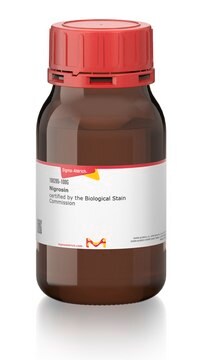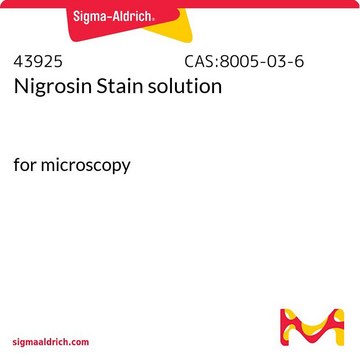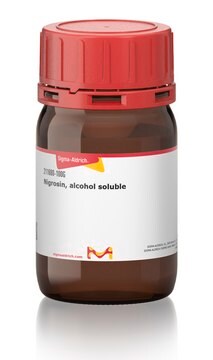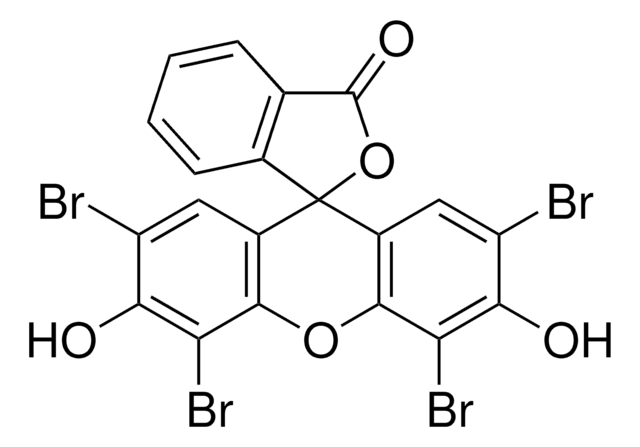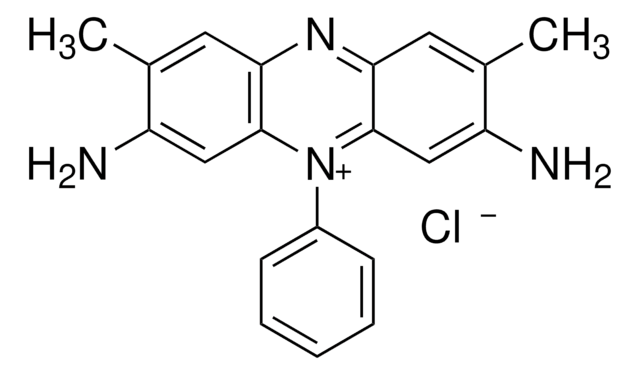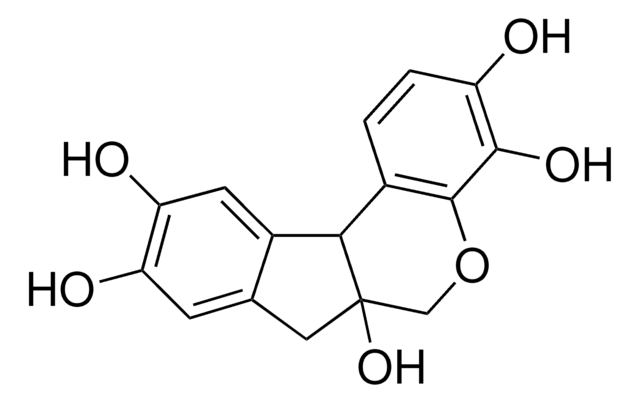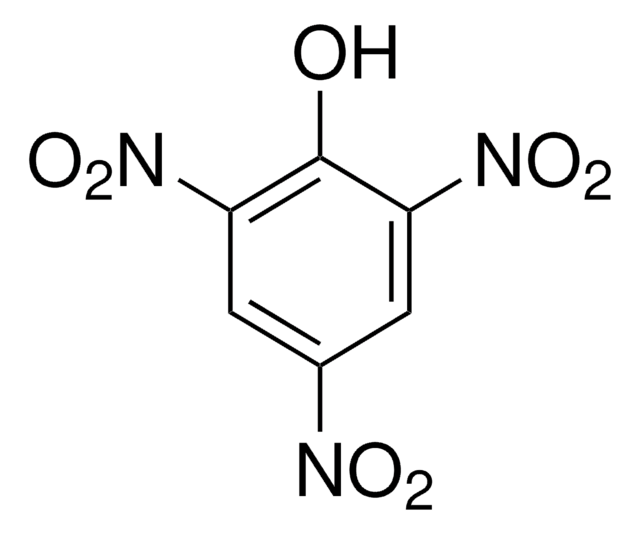N4754
Nigrosin water soluble
Powder
Synonym(s):
Acid black 2
Sign Into View Organizational & Contract Pricing
All Photos(1)
About This Item
CAS Number:
Colour Index Number:
50420
MDL number:
UNSPSC Code:
12171500
NACRES:
NA.47
Recommended Products
Product Name
Nigrosin water soluble, For use as a biological stain
Quality Level
form
powder
solubility
water: 1 mg/mL, turbid
εmax
~250 at 575 nm in 50% ethanol
application(s)
diagnostic assay manufacturing
hematology
histology
storage temp.
room temp
Looking for similar products? Visit Product Comparison Guide
General description
Nigrosin is an acidic dye used as a negative stain for visualization of the capsule in bacteriological material.
Application
Nigrosin has the following applications:
- to stain live sperm
- as a viable cell staining agent especially in stem cell biology
- as a negative stain in place of India ink for spirochetes, bacteria, protozoa, and fungi
- in Dorner′s spore stain.
Storage Class Code
11 - Combustible Solids
WGK
WGK 3
Flash Point(F)
Not applicable
Flash Point(C)
Not applicable
Personal Protective Equipment
dust mask type N95 (US), Eyeshields, Gloves
Choose from one of the most recent versions:
Already Own This Product?
Find documentation for the products that you have recently purchased in the Document Library.
Customers Also Viewed
Graff's Textbook of Routine Urinalysis and Body Fluids (2010)
Experiments in Microbiology, Plant Pathology and Biotechnology (2003)
Broadband UV-Vis optical property measurement in layered turbid media.
Wang Q
SPIE Medical Imaging. International Society for Optics and Photonics, 2014 (2011)
Quanzeng Wang et al.
Biomedical optics express, 3(6), 1226-1240 (2012-06-29)
The ability to accurately measure layered biological tissue optical properties (OPs) may improve understanding of spectroscopic device performance and facilitate early cancer detection. Towards these goals, we have performed theoretical and experimental evaluations of an approach for broadband measurement of
L Björndahl et al.
Human reproduction (Oxford, England), 18(4), 813-816 (2003-03-28)
The one-step eosin-nigrosin staining technique for assessment of sperm vitality was developed in the 1950s for various mammalian species. Although commonly used on human sperm in semen, a validation for this use has not previously been published. The technique was
Our team of scientists has experience in all areas of research including Life Science, Material Science, Chemical Synthesis, Chromatography, Analytical and many others.
Contact Technical Service